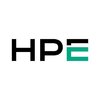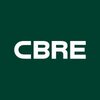

Gmmco




20+ Gmmco Interview Questions and Answers
Q1. Different between any two (process or methods) based on the course
Different processes used in engineering
Two different processes in engineering are welding and soldering
Welding involves melting and fusing two pieces of metal together
Soldering involves melting a filler metal to join two pieces of metal together
Welding is used for heavy-duty applications while soldering is used for electronics
Welding requires higher temperatures and more equipment than soldering

Q2. Real time problems and solutions to the industry (difficult level)
Real-time problems in industries include equipment breakdowns, supply chain disruptions, and labor shortages.
Equipment breakdowns can be solved by implementing regular maintenance checks and having backup equipment.
Supply chain disruptions can be solved by diversifying suppliers and having contingency plans.
Labor shortages can be solved by investing in employee training and development programs and offering competitive wages and benefits.
Other real-time problems include cyber...read more

Q3. Latest technology in the field of respective course
Artificial Intelligence and Machine Learning are the latest technologies in the field of Computer Science and Engineering.
Artificial Intelligence (AI) is the simulation of human intelligence processes by machines, especially computer systems.
Machine Learning (ML) is a subset of AI that allows systems to learn and improve from experience without being explicitly programmed.
AI and ML are being used in various fields such as healthcare, finance, transportation, and more.
Examples...read more

Q4. Describe the Recently attended Breakdown Vehicle & exject problem in Vehicle. How can Resolve the problem/Issue.
Recently attended breakdown vehicle had a faulty alternator. Resolved by replacing the alternator.
The vehicle had a problem with the alternator.
The issue was resolved by replacing the faulty alternator.
Ensured proper installation and testing of the new alternator.
Provided customer with instructions on how to prevent similar issues in the future.

Q5. How to troubleshoot transmission
To troubleshoot transmission, start by checking fluid levels, inspecting for leaks, testing the solenoids, and scanning for error codes.
Check transmission fluid levels and condition
Inspect for leaks in the transmission system
Test the solenoids for proper functioning
Scan for error codes using a diagnostic tool

Q6. How automatic transmission works
Automatic transmission uses a torque converter to shift gears without manual input.
Automatic transmission uses a torque converter to transfer power from the engine to the transmission.
It has a set of planetary gears that automatically shift based on speed and load.
The transmission control module (TCM) determines when to shift gears based on input from sensors.
Examples of automatic transmission include CVT (Continuously Variable Transmission) and DCT (Dual Clutch Transmission)...read more

Q7. The working principle of IC engine
IC engine works on the principle of internal combustion where fuel is burned inside the engine to produce power.
Fuel is mixed with air and ignited inside the engine
The explosion pushes the piston which turns the crankshaft
The crankshaft converts the linear motion of the piston into rotational motion
The rotational motion is used to power the vehicle or machinery
Examples include petrol engines, diesel engines, and gas turbines

Q8. Major applications in automotive sector
Major applications in automotive sector include powertrain, chassis, safety, infotainment, and autonomous driving.
Powertrain: engines, transmissions, drivetrains
Chassis: suspension, steering, brakes
Safety: airbags, seat belts, collision avoidance systems
Infotainment: audio systems, navigation, connectivity
Autonomous driving: sensors, software, control systems


Q9. How to resolved hydraulic slow operations
To resolve hydraulic slow operations, check for leaks, inspect hydraulic fluid levels, clean or replace filters, and ensure proper maintenance.
Check for leaks in the hydraulic system
Inspect hydraulic fluid levels and top up if necessary
Clean or replace filters to ensure proper flow
Ensure regular maintenance of hydraulic components

Q10. What is torque converter
A torque converter is a fluid coupling that transfers power from the engine to the transmission in an automatic vehicle.
Converts and multiplies engine torque to allow smooth acceleration
Consists of three main components: impeller, turbine, and stator
Helps maintain engine speed while the vehicle is stopped or moving slowly
Commonly used in automatic vehicles to provide smooth and efficient power transfer

Q11. What is torque convertor
A torque converter is a fluid coupling that transfers power from the engine to the transmission in an automatic vehicle.
A torque converter allows the engine to keep running while the vehicle is stopped
It uses fluid to transmit power from the engine to the transmission
It consists of three main components: the impeller, turbine, and stator
The impeller is connected to the engine, the turbine is connected to the transmission, and the stator redirects fluid flow for efficiency
Comm...read more

Q12. How to handle customer if he ask for under warrenty but it doesn't cover under warrenty
Explain the warranty coverage to the customer and offer alternative solutions.
Explain the specific terms of the warranty to the customer
Apologize for any confusion or inconvenience caused
Offer alternative solutions such as paid repair services or replacement options
Ensure the customer feels valued and supported throughout the interaction

Q13. How you will add value to our Products because it is one of the premium product.
I will add value to your premium products by providing personalized solutions, exceptional customer service, and continuous product improvement.
Offer personalized solutions tailored to each customer's specific needs and requirements
Provide exceptional customer service to ensure customer satisfaction and loyalty
Continuously work on product improvement based on customer feedback and market trends
Educate customers on the unique features and benefits of the premium products

Q14. what is the LRV
LRV stands for Light Rail Vehicle, a type of public transportation vehicle.
LRV is a type of electrically powered public transportation vehicle that operates on tracks.
LRVs are commonly used in cities for light rail transit systems.
Examples of LRV manufacturers include Siemens, Bombardier, and Alstom.

Q15. working of transmission
Transmission system transfers power from the engine to the wheels, allowing the vehicle to move at different speeds.
Transmission system uses gears to change the speed and torque of the vehicle.
It consists of components like clutch, gearbox, propeller shaft, differential, and drive shaft.
Different types of transmission systems include manual, automatic, CVT, and DCT.
The working principle involves engaging and disengaging gears to match the engine speed with the wheel speed.

Q16. What is valve lash in engine?
Valve lash is the gap between the rocker arm and the valve stem in an engine.
Valve lash needs to be adjusted periodically to ensure proper engine performance.
Too much valve lash can cause a noisy engine and reduced power output.
Too little valve lash can cause the valves to not fully close, leading to poor fuel economy and engine damage.
Valve lash is typically measured using feeler gauges.
Examples of engines that require valve lash adjustments include overhead cam engines and ...read more

Q17. How to change travel speed
Travel speed can be changed by adjusting the throttle or gear settings on the vehicle.
Adjust the throttle to increase or decrease speed
Shift gears to change speed levels
Use cruise control settings for consistent speed on highways

Q18. last major complaint
My last major complaint was regarding a malfunctioning equipment at a client site.
Client reported equipment not functioning properly
Visited client site to diagnose issue
Identified faulty component and replaced it
Tested equipment to ensure proper functioning
Followed up with client to confirm issue was resolved

Q19. First 7 Steps diagnosis process
The first 7 steps in the diagnosis process involve gathering information, conducting tests, and analyzing results.
1. Gather patient's medical history and symptoms.
2. Perform physical examination.
3. Order relevant tests such as blood work or imaging.
4. Review test results and compare with normal ranges.
5. Formulate differential diagnoses based on findings.
6. Conduct further tests if necessary.
7. Confirm final diagnosis and develop treatment plan.

Q20. Please share your knowledge about engine
An engine is a machine that converts fuel into mechanical energy to power vehicles or machinery.
Engines can be classified as internal combustion engines or external combustion engines
Internal combustion engines are commonly used in cars, motorcycles, and small aircraft
External combustion engines, such as steam engines, use an external heat source to generate steam which powers the engine
Engines require regular maintenance to ensure optimal performance and longevity
Common main...read more

Q21. IC engine compression ratio ?
Compression ratio is the ratio of the volume of the combustion chamber from its largest capacity to its smallest capacity.
It is an important parameter in determining the performance of an internal combustion engine.
It is calculated by dividing the volume of the combustion chamber when the piston is at the bottom of its stroke by the volume of the combustion chamber when the piston is at the top of its stroke.
Higher compression ratios result in higher engine efficiency and pow...read more

Q22. How many type of engine?
There are two main types of engines: internal combustion engines and external combustion engines.
Internal combustion engines: gasoline engines, diesel engines
External combustion engines: steam engines
Other types include rotary engines, electric engines, etc.

Q23. Hydrolic working?
Hydraulic systems use fluid to transmit power and operate machinery.
Hydraulic systems use incompressible fluid to generate power
Fluid is pumped into cylinders to create pressure and movement
Valves control the flow of fluid to different parts of the system
Common examples include hydraulic lifts, brakes, and steering systems

Q24. Explain Pascal law
Pascal's law states that a change in pressure applied to an enclosed fluid is transmitted undiminished to all portions of the fluid and to the walls of its container.
Pressure applied to a confined fluid is transmitted equally in all directions.
The pressure at any point in a fluid is the same in all directions.
Used in hydraulic systems to generate force or motion.
Example: Hydraulic car lift operates based on Pascal's law.





Top HR Questions asked in Gmmco
Interview Process at Gmmco

Top Interview Questions from Similar Companies









Reviews
Interviews
Salaries
Users/Month












